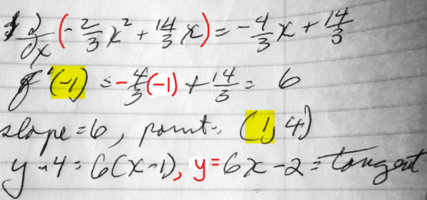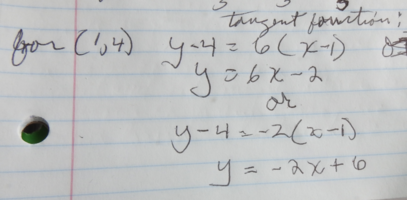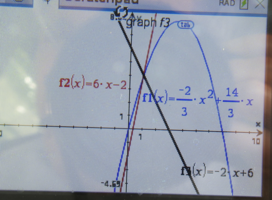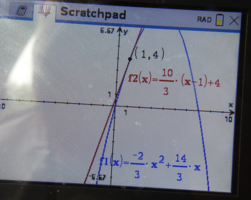allegansveritatem
Full Member
- Joined
- Jan 10, 2018
- Messages
- 962
This is the solution to a problem that asked the student to find a function of the form ax^2 +bx+c given certain information relating to the slopes at certain values of x. Also a set of coordinates was given . Anyway, I worked out the problem and managed with the help of the solutions manual (I already had most of the solution on my own) to get the function, namely:
I worked out the derivative and found the function for a tangent line, as follows:
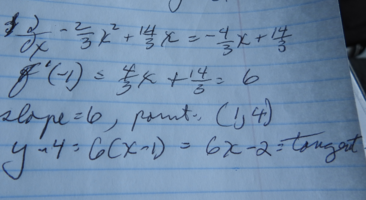
This was not asked for in the problem but I wanted to see what a graph of the tangent would look like. Here is what it looked like:
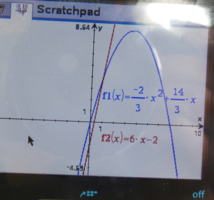
Obviously this is not the picture I was expecting. But I can't for the life of me see what is wrong. 6x-2 should yield a tangent line here and it doesn't. Can someone tell me why? I apologize for not including a photo of the actual problem involved but I didn't feel it was necessary in this case and so I neglected to make one. If anyone feels they need to see the problem I will post it tomorrow. My whole dilemma is this: Given the function -2/3 x^2 + 14/3 x why did I not get a tangent line with the function 6x-2? By the way, the point of tangency is (1,4)
I worked out the derivative and found the function for a tangent line, as follows:

This was not asked for in the problem but I wanted to see what a graph of the tangent would look like. Here is what it looked like:

Obviously this is not the picture I was expecting. But I can't for the life of me see what is wrong. 6x-2 should yield a tangent line here and it doesn't. Can someone tell me why? I apologize for not including a photo of the actual problem involved but I didn't feel it was necessary in this case and so I neglected to make one. If anyone feels they need to see the problem I will post it tomorrow. My whole dilemma is this: Given the function -2/3 x^2 + 14/3 x why did I not get a tangent line with the function 6x-2? By the way, the point of tangency is (1,4)

